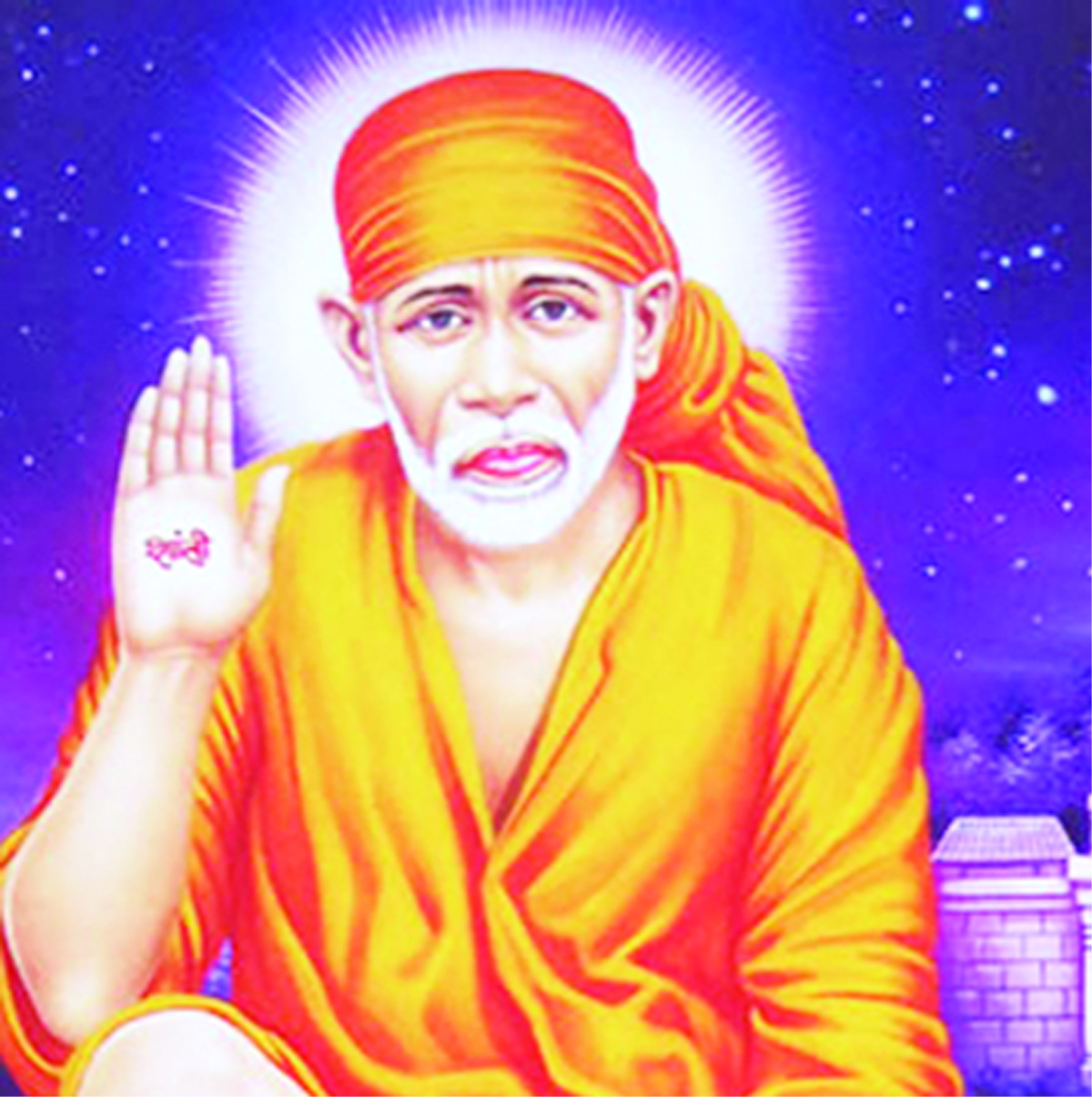Hemant Dharmat
The 100th year of the Mahasamadhi of Sai Baba of Shirdi, the crown-jewel among the galaxy of great saints and sages who adorned India’s spiritual landscape is being celebrated during this year’s Dashera festival falling on October 19,2018. Lord Krishna said “Whenever there is decline of ‘Dharma’ (righteousness), and ascendency of ‘Adharma’ (unrighteousness), I manifest myself to protect the virtuous and destroy the wicked and to re-establish the Dharma in every age” (Gita 4, 7-8). Saints and sages continue to visit the planet from time to time and work in their own peculiar ways to carry forward HIS mission. Once their objective is achieved, they disappear from the scene leaving behind a beaten path for pious souls to tread upon in pursuit of spiritual goal.
On September 28, 1918, Sai Baba had moderate fever that lasted for a couple of days. Thereafter, He stopped eating food resulting in weight loss that left Him pale and thin. There is a practice of reading scriptures among Hindus when someone is on deathbed. With a view to enhance the importance of this custom, Baba asked Shri Vajje to recite ‘Ram Vijay’ section of Ramayana for fourteen days. Then, Baba sat still, waiting for His last moment. A few days before Vijay Dashmi, Baba was experiencing unbearable pain. As His end drew near, He got up and sat straight on His own.He gave nine rupee coins indicative of ‘navvidya bhakti’ (the nine tenets of devotion) in alms to a wealthy woman, Lakshmi Bhai Shinde and breathed His last peacefully sitting on His asana.
Baba always remained conscious and wide awake and exercised much caution at the last moment of His life. He directed the devotees to leave ‘Dwarkamai’ including those in His service to return after lunch. None of them was in a mood to depart. They had not even finished their meals, when the catastrophic news of Baba’s Mahasamadhi shook them off their seats. They ran with their stomach half empty leaving behind their plates.The heart-rending news of Baba’s Nirvan spread all-around like forest conflagration. The people of Shirdi all young, old and children irrespective of sex, religion, caste or creed converged at ‘Baba’s masjid’. There was uproar in every nook and corner of the hamlet. Some started weeping uncontrollably, tears rolling down their eyes. A few fell unconscious on the ground. All else mourned with shock and disbelief. Their sorrow defied words in that they had lost the refuge of ‘Parbrahm’ to whom they could look for succor in crisis situations.
A few days prior to Sai Baba’s Mahanirvan, a brick gifted by His Guru, which Baba used as a pillow while going to bed and for resting His hand during the day was accidently broken into two pieces by a child while cleansing Dwarkamai. On being informed Baba said, “It’s My fate not the brick that has got shattered. My lifelong companion that it was, I utilized it for Self-reflection and held it as dear as My very Breath. It has at last left Me.”
Baba left His mortal coils at 1430 hrs. On 15 October, 1918 coinciding with Dashera festival. As such His Mahasamadhi day is celebrated on Vijay Dhashmi. Before breathing His last, He said, “No longer do I feel fine in the ‘masjid’. Take Me to Booty’s Patharwadha.” This temple also known as Bootywadha was built by Booty, a wealthy disciple on the inspiration of Sai Baba. When He expired, the Hindu and Muslim followers started contesting whether His last rites should be conducted in accordance with the ancient Hindu traditions or on the Muslim pattern. Moulvis insisted that the body be buried and a suitable Makbara built over the grave. Baba appeared in the dream of Lakshman Joshi, directing him to perform morning puja. As He lifted the coffin from Baba’s body, He was stupefied by the Godly splendour on Baba’s lifeless face radiating affection and warmth. Regardless of the Moulvis’ opposition, he held the routine ‘Kankarh Aarti’. The noontime ‘MadyanhAarti’ was performed by Bapusaheb Jog as per practice during Baba’s lifetime. Meanwhile the parleys between the two sides continued for 36 hours. Wisdom prevailed at last and the Muslim devotees also voted in favour of Bootywadha in consonance with Baba’s dying wish. After such long period, Baba’s body neither lost freshness nor became stiff in that the coffin was removed without any difficulty. The mortal remains were brought to Bootywadha with much pomp and show and his Samadhi was established at the place earmarked for installation of Lord Krishna’s idol. Later Baba’s Murti was installed beside the Samadhi. The sculptor was fortunate to be blessed with Sai Baba’s darshan, which enabled him to match the features with Baba’s actual appearance.
Decades before in 1886, on full moon day of the month of Marg-Sheersh, Sai Baba elevated His ‘pran’ atop ‘Brahmand’ and went into 72 hrs. long Samadhi. As directed by Him, Mahalsapati guarded His body for three days at a stretch despite continued pressure from village elders who wanted the body be handed over for last rites as there was no trace of life left in it. But Mahalsapati kept the insentient body secure in his lap. After three days, signs of life reappeared. The breathing process slowly restored, the limbs began to shake and Baba regained consciousness.
Though Sai Baba is no more, yet devotees continue to have His vision and pass through such experiences as if He was still alive. Baba repeatedly said, “Mujes adajeevit hi jano, anubhav karo satyapahchano.” i.e.”Know that I am forever alive. Familiarize yourself with this truth through personal experience”.Sai Baba once said “I am formless and limitless and pervade the ‘Sarvbhoot’ (five elements constituting the universe viz. Earth, Water, Air, Fire and Space). Whoever always contemplates on me only with faith steadfast, I carry out all his duties and bestow him salvation after death.”
feedbackexcelsior@gmail.com
Trending Now
E-Paper


